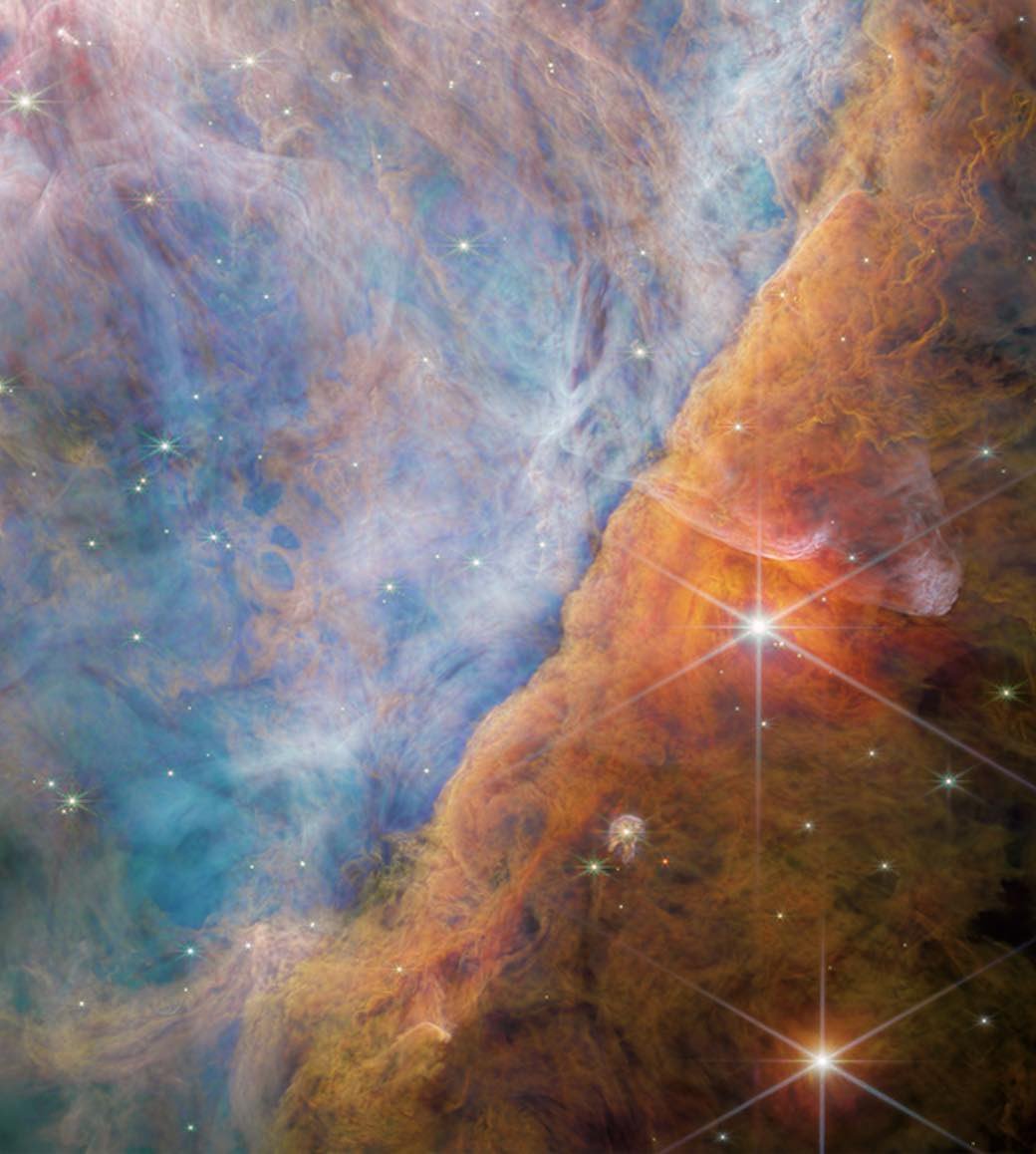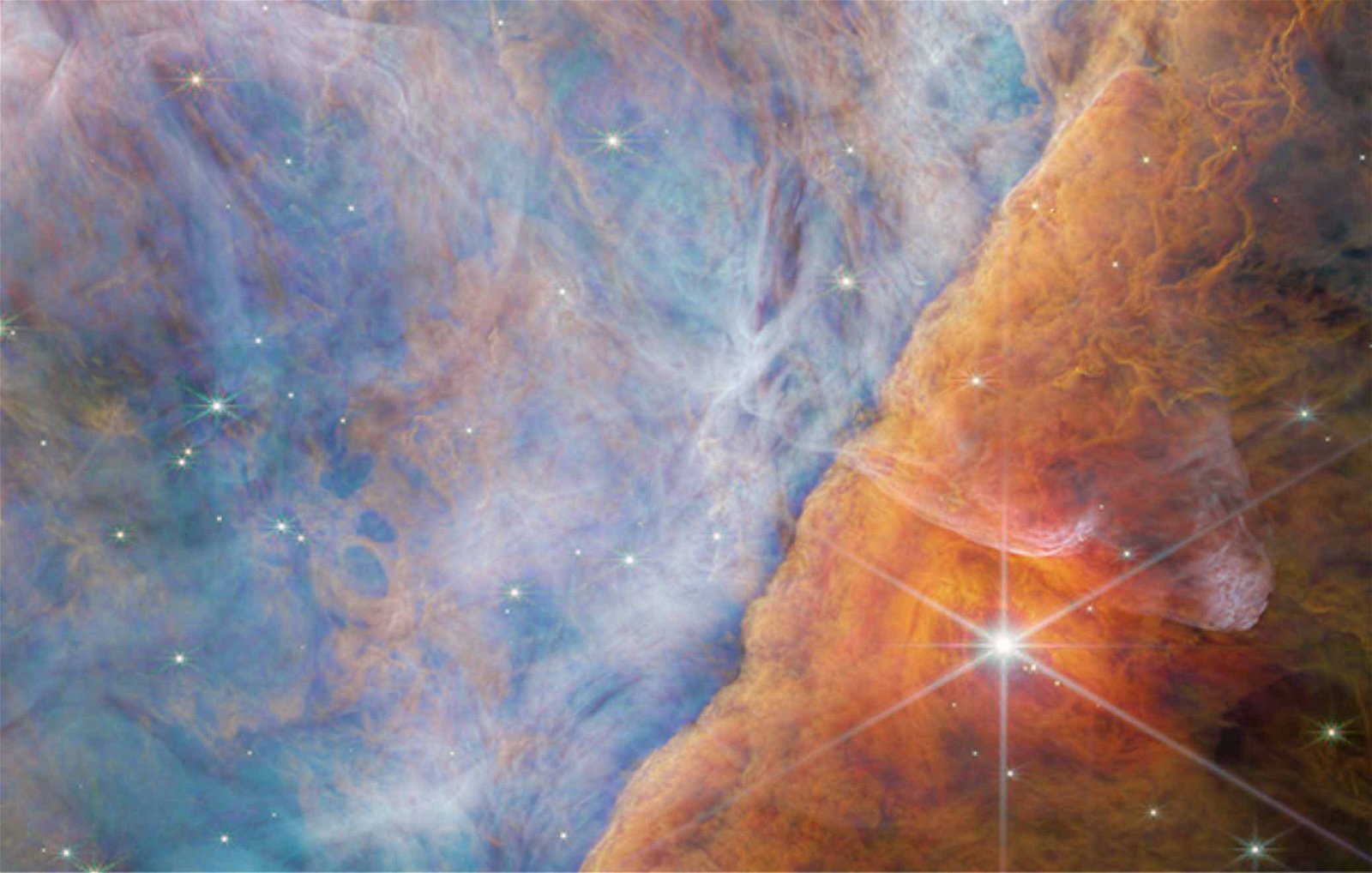A new carbon compound has been detected in space for the first time using NASA’s James Webb Space Telescope, according to the findings of an international team of researchers.
The compound, methyl cation, was discovered with help from Webb in a distant and relatively young star system some 1,350 light years away known as d203-506.
Resting in the Orion Nebula, d203-506 possesses a protoplanetary disk. Its local star in d203-506 is a red dwarf, meaning the system is subjected to constant ultraviolet light, one component that astronomers view as indicating a period most planet-forming discs will undergo.
However, the presence of methyl cation (CH3+) in d203-506 is significant here because of its role in the formation of complex carbon-based molecules, which could give rise to life.
Astronomers have long been fascinated by the presence of organic compounds in various regions of space, an area of interstellar study that Webb has helped since its launch. By studying carbon compounds and their role in the formation of life on Earth, astronomers are curious about whether its presence elsewhere in the cosmos could point to areas that are also likely to host life.
Part of what makes the detection of organic molecules a specialty for Webb involves the telescope’s sensitivity and unique spectral resolution capabilities. Specific features are discernable in celestial regions that directly correspond to the presence of chemical elements, all of which Webb is well suited for detecting.
In this case, the telescope succeeded in detecting bright features that appear as lines in the spectrum when light is emitted, otherwise known as emission lines, which were specifically attributed to the presence of CH3+.


A portion of the Orion Nebula’s “Orion Bar,” where ultraviolet light interacts with dense molecular clouds (credit: ESA/Webb/NASA).
Marie-Aline Martin-Drumel, a scientist with the University of Paris-Saclay in France and a member of the research team involved in the discovery, said in a statement that the detection of CH3+ both validates Webb’s capabilities and also “confirms the postulated central importance of CH3+ in interstellar chemistry.”
Generally, star systems that receive large amounts of UV radiation, like d203-506, would destroy organic molecules, which makes the detection of CH3+ in this region interesting. However, it isn’t necessarily unusual because UV, while potentially destructive to organic molecules, might, in this case, provide an energy source for the formation of CH3+, which promotes the production of organic compounds.
Based on their current observations, the molecules observed in d203-506 appear to differ significantly from past observations of protoplanetary disks. Notably, the research team says that they found no indications of water in the emissions data Webb allowed them to gather.
Among the team’s key findings is the role that ultraviolet radiation appears to play in altering the chemistry that naturally occurs within protoplanetary disks.
Olivier Berné, the lead author of a study describing the team’s work and a scientist with the French National Centre for Scientific Research in Toulouse, France, said this observation of the dynamics of protoplanetary disks indicates ultraviolet radiation “might actually play a critical role in the early chemical stages of the origins of life.”
The team’s findings were published in the journal Nature.
Micah Hanks is the Editor-in-Chief and Co-Founder of The Debrief. He can be reached by email at micah@thedebrief.org. Follow his work at micahhanks.com and on Twitter: @MicahHanks.

